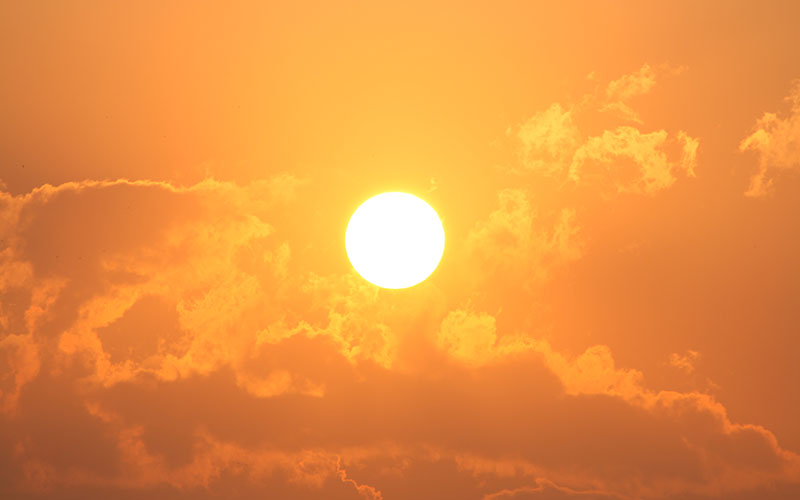
Smaller jets can’t operate at 118 degrees or higher, according to an email from an American Airlines spokesman. (Photo from Lima Andruška via Creative Commons)
PHOENIX – The extreme heat in the Phoenix area, expected to reach 120 degrees on Tuesday, endangers the elderly and others with health risks and has lead to dozens of cancelled flights.
The National Weather Service said temperatures rose to a scorching 118 degrees on Monday and was forecast to reach 120 degrees on Tuesday and 118 again on Wednesday.
American Airlines cancelled 50 regional flights passing through Sky Harbor Airport in the late afternoon, when temperatures reach their peak. Smaller jets can’t operate at 118 degrees or higher, according to an email from an American Airlines spokesman.
The American Eagle regional flights effected include those in Flagstaff, Yuma and Tucson.
The airline encouraged passengers who had booked late afternoon arrivals or departures between 3 and 6 p.m. on flights through Wednesday to reschedule their flights with no financial penalty.
The soaring temperatures are not expected to affect large planes that can handle up to 127 degrees in order to fly. No other airlines are expected to be affected, a Phoenix Sky Harbor operations official said.
In the wake of a record 122 degree high in the Valley 27 years ago, on June 26, 1990, flights were grounded because of the heat. American Airlines said large jets withstand temperatures can withstand temperatures up to 126 or 127 degrees.
High temperatures also are deadly. A state health report says 536 people, including visitors from out of state and Canada, died from exposure to extreme heat from 2005 to 2015. An Arizona doctor warns that extreme heat is particularly dangerous to the elderly and those with chronic illnesses.
Take care out there
Dr. Teresa Wu said emergency room patients she often sees include the elderly and people who have heart conditions, high blood pressure and kidney, liver and gastrointestinal problems.
People with gastrointestinal issues may not be able to absorb fluid and electrolytes well.
“People underestimate how that heat can get trapped within Phoenix, in areas such as Camelback Mountain, because there’s not a lot of places for the heat to dissipate,” she said.
Wu, an associate professor of emergency medicine at Banner University Medical Center, said she would encourage Phoenix residents to step up if they saw people in need of water or shelter from the heat, and to refer them to shelters and other resources if they did see them.
“Many of our patients that are coming in unfortunately don’t have any place to go,” she said. “They don’t have the knowledge to even seek out resources, to obtain water or shelter or the respite that they need.”
Phoenix and other local governments and nonprofits are providing water stations for those in need, such as the homeless.
Extreme heat helps the climate
Randall Cerveny, a professor of geographical sciences at Arizona State University, said summer heat is necessary for a monsoon.
“The heat at the surface causes a wind pattern that starts to draw moisture up from the Gulf of California and from the Pacific Ocean,” he said. “So if we didn’t have these hot temperatures right now, we wouldn’t have any chance for a monsoon later on in the year.”
He said the latest heat wave, like all heat waves, forms within a dome of high pressure. This dome heats sinking air as it pushes it down – like a pressure cooker.
Computer modelling shows that Phoenix’s dome is expanding, heating up more and more air as it compresses it.